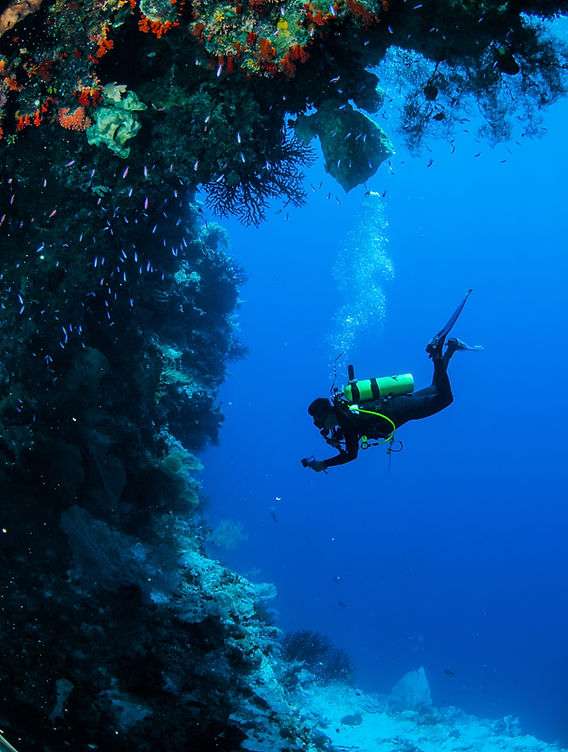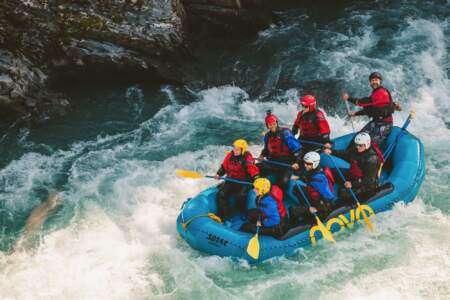The allure of the deep, the unexplored, and the challenge of pushing boundaries have always driven human exploration. In the realm of scuba diving, this manifests in the pursuit of the record depth for scuba diving. This is not merely about bragging rights; it’s about understanding the human body’s capabilities under extreme pressure, testing the limits of technology, and gaining insights into the mysteries hidden beneath the surface of our oceans. The current record depth for scuba diving is a testament to human ingenuity, meticulous planning, and unwavering courage. Diving to such depths presents a myriad of physiological and technological challenges that require innovative solutions and a profound understanding of the underwater environment.
The Science Behind Deep Diving Challenges
The deeper one dives, the greater the pressure exerted on the body. This pressure affects every bodily system, from respiration to circulation. Here’s a breakdown of some key challenges:
- Nitrogen Narcosis: At depth, nitrogen dissolves into the bloodstream at higher concentrations, leading to a state similar to intoxication. This can impair judgment, coordination, and cognitive function.
- Oxygen Toxicity: While essential for life, oxygen becomes toxic at high partial pressures. This can lead to seizures and other serious health problems.
- Decompression Sickness (The Bends): As divers ascend, the dissolved nitrogen forms bubbles in the tissues and bloodstream if the ascent is too rapid. This can cause joint pain, paralysis, and even death.
- High-Pressure Nervous Syndrome (HPNS): This syndrome can occur during very deep dives and involves neurological symptoms such as tremors, nausea, and cognitive impairment.
Technological Advancements in Deep Diving
Overcoming these challenges requires sophisticated equipment and techniques. Here are some examples:
- Trimix and Heliox: These gas mixtures replace nitrogen with helium to reduce narcosis and oxygen toxicity.
- Rebreathers: These devices recycle exhaled gas, conserving breathing gas and reducing the risk of decompression sickness.
- Dive Computers: Sophisticated dive computers monitor depth, time, and gas mixtures, providing real-time decompression calculations.
- Pressure Chambers: These chambers allow divers to decompress slowly and safely after deep dives.
Who Holds the Deepest Scuba Dive Record?
While records are constantly being challenged and refined, the current documented record for the deepest open-circuit scuba dive is held by Ahmed Gabr, who reached a staggering depth of 332.35 meters (1,090.4 feet) in the Red Sea in 2014. This extraordinary feat was the culmination of years of planning, training, and technological innovation. It serves as an inspiring example of what can be achieved with dedication and a relentless pursuit of the unknown.
Comparing Diving Depths
Here’s a table comparing different depth ranges and their associated challenges:
| Depth Range (Meters) | Typical Activities | Key Challenges |
|---|---|---|
| 0-30 | Recreational Scuba Diving, Snorkeling | Basic buoyancy control, equalization |
| 30-40 | Advanced Scuba Diving | Nitrogen narcosis, increased gas consumption |
| 40-100 | Technical Diving | Decompression sickness, oxygen toxicity, HPNS |
| 100+ | Extreme Technical Diving, Record Attempts | All of the above, plus extreme pressure and physiological stress |
The Future of Deep Diving
The future of deep diving is likely to involve even more sophisticated technology, including advanced rebreathers, remote-operated vehicles (ROVs), and potentially even submersible habitats. Researchers and explorers will continue to push the limits of human endurance in their quest to understand the deep ocean environment.
The pursuit of the record depth for scuba diving is not just about breaking records, it’s about expanding our knowledge of the underwater world and pushing the boundaries of human potential.
Ethical Considerations and the Risks Involved
While the technological advancements and physiological understanding surrounding deep diving continue to improve, the inherent risks remain substantial. The pursuit of record-breaking dives raises important ethical questions about the acceptable level of risk, not only for the divers themselves but also for the support teams involved. The dedication and resources required for such endeavors are immense, and the potential consequences of failure can be catastrophic. Therefore, meticulous planning, rigorous safety protocols, and a clear understanding of the potential outcomes are paramount;
One crucial aspect often overlooked is the environmental impact. Deep diving expeditions can potentially disrupt fragile ecosystems, especially in previously unexplored areas. The presence of support vessels, the deployment of equipment, and even the physical presence of divers can have unintended consequences on marine life and habitats. Sustainable practices and responsible exploration are essential to minimize the environmental footprint of these activities.
Alternative Approaches to Deep Sea Exploration
While scuba diving offers a direct and immersive experience, other methods provide safer and more sustainable alternatives for exploring the deep sea. Remotely Operated Vehicles (ROVs) and Autonomous Underwater Vehicles (AUVs) can venture to depths far beyond the reach of human divers, gathering data and imagery without the risks associated with human presence. These technologies are becoming increasingly sophisticated, capable of performing complex tasks and transmitting high-resolution video in real-time.
Another promising avenue is the development of advanced submersibles capable of withstanding extreme pressures. These vessels provide a safe and controlled environment for researchers and explorers to observe and interact with the deep-sea environment. They offer greater maneuverability and observation capabilities compared to ROVs, allowing for more detailed scientific investigations.
Choosing the appropriate method for deep sea exploration depends on the specific objectives and the resources available. Scuba diving, while offering a unique and challenging experience, should be reserved for situations where the risks are carefully weighed against the potential benefits, and where all necessary precautions are taken to ensure the safety of the divers and the protection of the environment.
Ultimately, the future of exploring the deepest reaches of our oceans lies in a balanced approach that combines human ingenuity with technological innovation, while always prioritizing safety, sustainability, and ethical considerations. The drive to push the limits of exploration should be tempered by a deep respect for the delicate balance of the marine environment and a commitment to responsible stewardship of our planet’s oceans.


